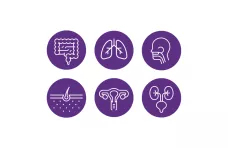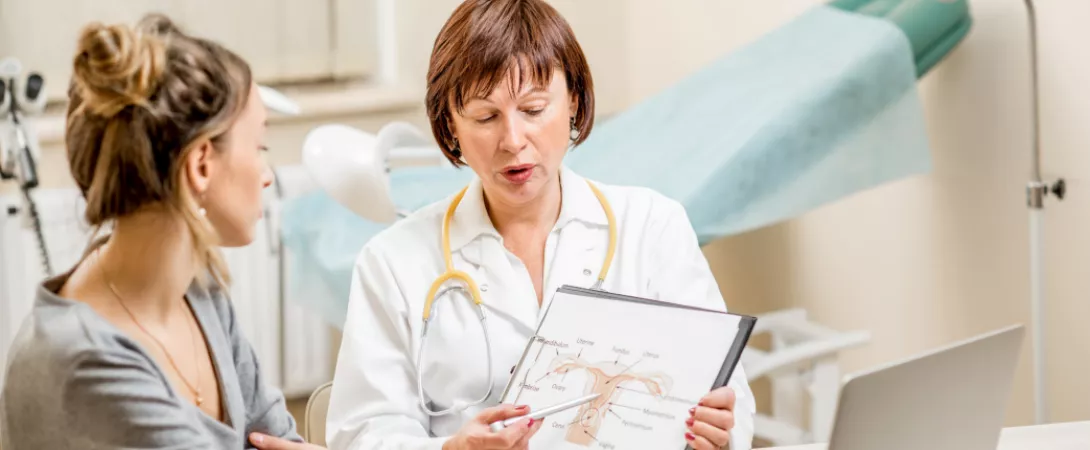2025: What women know (and don't know) about their vaginal microbiota International Microbiota Observatory
For the third year running, the Biocodex Microbiota Institute has commissioned Ipsos to conduct a major international survey on microbiota: the International Microbiota Observatory. This large survey was conducted by Ipsos among 7,500 people in 11 countries (the USA, Brazil, Mexico, France, Germany, Italy, Portugal, Poland, Finland, China and Vietnam).
Vaginal microbiota is essential for women's health. But how well is it known by women? What behaviors do they adopt to preserve it? What information do their healthcare professionals provide them? The third wave of this study shows an increasing awareness and knowledge of the vaginal microbiota, its role, and its functions. However, it also highlights that some knowledge about the functioning of the vaginal microbiota has not progressed in 2 years. There is still limited awareness from healthcare professionals. This awareness now needs to be strengthened and extended to all women.
1. The vaginal microbiota: an increasingly understood organ
The awareness and understanding of the vaginal microbiota continue to grow, with one in four women (24%) now claiming to know exactly what the vaginal microbiota is—a 5-point increase since 2023.
This rising trend in recognition is encouraging, yet the knowledge remains largely superficial. Nearly half of all women have never heard of the vaginal microbiota (46%), although this figure has decreased by 8 points compared to 2023.
Despite gaps in overall awareness, there is a good understanding of certain key aspects of the vaginal microbiota:
A significant majority of women recognize that antibiotics can alter the vaginal microbiota
(+1 point vs. 2024)
understand the impact of vaginal dryness or dehydration on it
(No evolution since 2023)
of women are aware of the vaginal microbiota's crucial role as a protective barrier against pathogenic microorganisms
(+1 point vs. 2023)

Knowledge in some areas is progressing.
Awareness that each woman’s vaginal microbiota is unique has grown significantly — up 9 points since 2023 — with 66% of women acknowledging this today.
Similarly, 60% of women understand that the vaginal microbiota undergoes changes throughout a woman's life, also showing a 9-point increase since 2023.
However, significant knowledge gaps persist, particularly regarding factors that influence the vaginal microbiota, with no substantial progress observed over the past two years.
Only 55% of women are aware that smoking can affect their vaginal microbiota, a figure that has decreased by 1 point since 2024. Even fewer—just 45%—understand the connection between the gut microbiota and the vaginal microbiota (+1 point since 2024).

Learn all about microbiota
Find out more!
2. Bridging the gap between awareness and action
The adoption of behaviors aimed at protecting the vaginal microbiota presents a mixed picture. While some positive habits are widely embraced, others remain less common, and certain practices that may affect vaginal health persist.
Some beneficial behaviors that are adopted
wear cotton underwear
(+1 point vs. 2023)
of women avoid self-medication
(+5 points vs. 2024)
of women use soap-free cleansing solutions
(-1 point vs. 2023)
Some behaviors that could affect vaginal microbiota continue to be part of women’s routines
- Vaginal douching, while showing a decrease over the past two years, is still practiced by more than one-third of women (38%, -4 points vs 2023)
- The practice of sleeping with underwear remains common, with 55% of women doing so (+3 points vs 2023).
- And more than half of women (54%) wash their body several times a day, which can be detrimental to vaginal microbiota health.

Female anatomy, microbiotas and intimate hygiene
Learn more
3. Women seek guidance from healthcare professionals
Despite the crucial role of the vaginal microbiota in women's health, only a minority of women receive comprehensive information from their healthcare providers on this topic.

Only 37% of women have received information about the vaginal microbiota, its role, and functions (+1 point vs 2023).

Slightly more encouraging is that 42% have received explanations on how important it is to best preserve their vaginal microbiota (+2 points vs 2023).

Additionally, 42% report that healthcare professionals educate them on the good behaviours to adopt in order to maintain a good balance within their vaginal microbiota (+1 point vs 2023).
The demand for knowledge, however, is overwhelmingly clear
A large majority of women, 85%, express a desire to receive more information from their healthcare professionals about the importance of the vaginal microbiota and its impact on health (+3 points vs 2023). This growing interest highlights a critical need for enhanced education and communication in this topic.
Receiving professional guidance has been shown to positively influence microbiota awareness and the adoption of good habits. Women who have received repeated and comprehensive information from healthcare professionals demonstrate markedly better awareness and healthier habits.

How to keep a healthy microbiota?
Learn moreWomen who have received repeated and multiple information on microbiota from healthcare professionals have a better understanding of the term “vaginal microbiota”:
- 56% know exactly what the vaginal microbiota is, compared to only 24% of women overall.
- They also show a heightened awareness of the vaginal microbiota's importance to women's health, with 90% recognizing its crucial role versus 78% of the general female population.
This improved understanding translates into the adoption of healthier practices
Women who have received professional guidance are more likely to engage in behaviors that support vaginal microbiota health:
- 64% sleep without underwear (compared to 45% among all women)
- 93% wear cotton underwear (versus 84% among all women)
- 80% use a soap-free cleaning solution (as opposed to 56% among all women)

4. Age: a determining factor in vaginal microbiota awareness
This year's findings continue to highlight that women aged 60 and above remain the least informed and aware about the vaginal microbiota. Paradoxically, they unknowingly adopt certain beneficial behaviors that support their microbiota.
of women aged 60 and above know exactly what vaginal microbiota is
(vs to 24% overall)
of women aged 60 and above know that the vagina is self-cleaning
(vs 58% of all women)
are aware that bacterial vaginosis is associated with an imbalance in the vaginal microbiota
(vs 44% of all women)
However, the picture is more nuanced, with older women showing better knowledge in some areas. For instance, 78% know that antibiotics can alter the vaginal microbiota (vs 72% of all women), and 70% are aware that the vaginal microbiota acts as a barrier protecting against pathogenic microorganisms (vs 66% of all women).
Women aged 60 and above also stand out in adopting certain behaviors to preserve vaginal microbiota balance.
Three out of four avoid self-medication
(vs 66% of all women)
avoid vaginal douching
(vs 62% of all women)
But only 2 in 5 sleep without underwear
(vs 45% of all women)
Notably, this demographic receives less education from healthcare professionals: less than a third of women aged 60 and above have had the vaginal microbiota, its role, and functions explained by a healthcare professional (29%, vs 37% of all women).

Microbiota changes in senior woman
Learn moreYoung women and new mothers are more informed about vaginal microbiota. They demonstrate a higher level of awareness and knowledge about the vaginal microbiota. However, they do not necessarily adopt beneficial behaviors.
Among these groups, 62% of 25-34-year-olds and 68% of young mothers know what the vaginal microbiota is, compared to 54% of women overall. These demographics also show better understanding of vaginal health: 66% of both groups know that the vagina is self-cleaning (vs 58% of all women).

They are also more aware that the mode of delivery could impact the newborn's gut microbiota, with 47% of 25-34-year-olds and 56% of young mothers recognizing this fact (vs 41% of all women).
The increased awareness in these groups may be attributed to more frequent interactions with healthcare professionals: 44% of 25-34-year-olds and 57% of young mothers have received information about the vaginal microbiota role and functions from a healthcare professional, compared to 37% of women overall.

In terms of beneficial practices, these groups are more likely to sleep without underwear: 49% of 25-34-year-olds and 57% of young mothers do so, compared to 45% of women overall.
However, they struggle with other beneficial behaviors and are more likely to engage in some potentially harmful practices: 42% of 25-34-year-olds and 50% of young mothers practice vaginal douching, compared to 38% of women overall and 40% of 25-34yo and 53% of young mothers practice self-medication, compared to 34% overall.
Methodology
This third edition of the International Microbiota Observatory was conducted by Ipsos on 7,500 individuals across 11 countries (France, Portugal, Poland, Finland, Italy, Germany, the USA, Brazil, Mexico, China, and Vietnam). Two new countries were included in this edition: Italy and Germany.
The survey was conducted over the Internet between January 21 and February 28, 2025. For each country, the sample is representative of the population aged 18 and over in terms of :
- gender
- age
- profession
- region
Representativeness was ensured via quota sampling, the most commonly used sampling method for obtaining a representative sample of the population studied. The quota variables for each country were gender, age, region, and socio-professional category. The data were adjusted:
- within each country, again to ensure that each population is representative
- globally, so that each country has the same weight. Statistical analyses were carried out using Cosi software (M.L.I., France, 1994), with a significance level of 95%
The survey population was 48% male and 52% female. The average age was 47.3 years. The sample of 7,500 individuals (within this sample, 3,862 women were interviewed) made it possible to carry out a detailed analysis by age group:
- 18-24
- 25-34
- 35-44
- 45-59
- 60 and over
Changes from one year to the next have been measured on a like-for-like basis, i.e. calculated taking into account only those countries present in both the first and second editions of the survey. While we do have results for the new countries included in this third edition (Germany and Italy), they have not been taken into account when calculating trends, since they were not included in the first two editions of the survey.
The questionnaire includes 16 questions on:
- socio-demographic data
- the level of knowledge about microbiomes
- the level of and desire for information from healthcare professionals
- the identification and adoption of behaviors designed to combat microbiome imbalances
- the level of knowledge, information, and behaviors of women about the vulvo-vaginal microbiome
- health data
The questionnaire lasted ten minutes and the 7,500 individuals had to complete the entire questionnaire in order to be included in the survey. The terms used in the questionnaire to talk about the microbiome have been translated and adapted to the terms used in each country.
BMI-25.22




